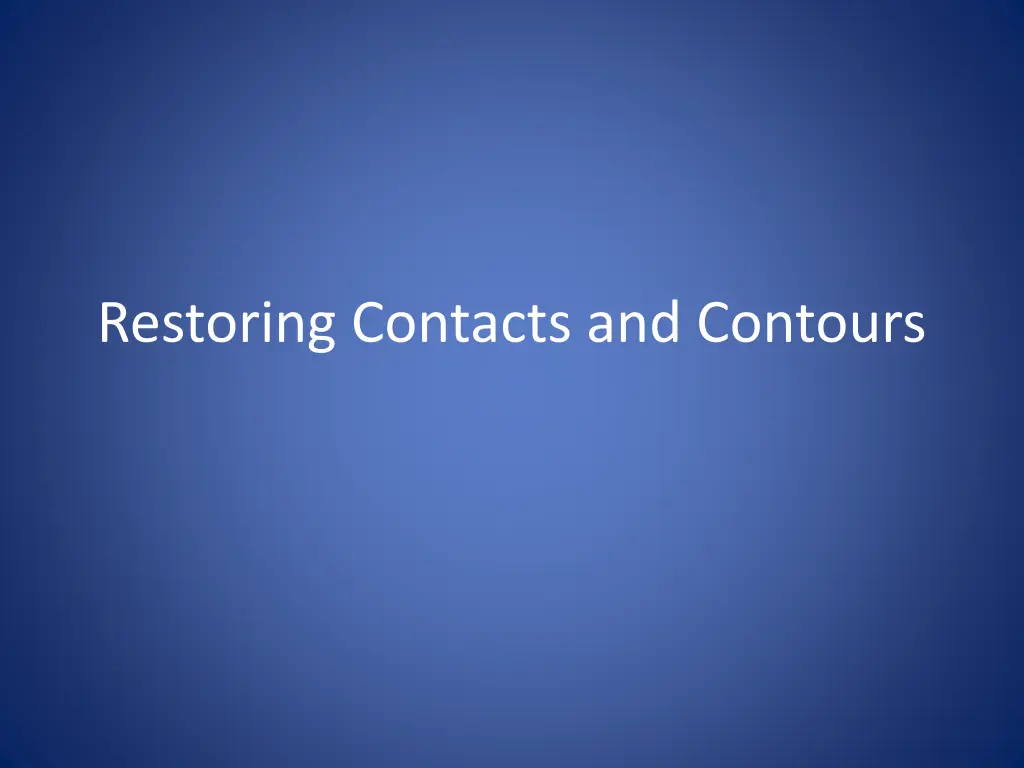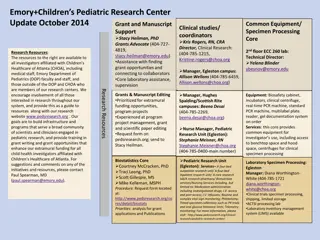
Understanding the Importance of Tooth Contact and Contour
Discover the significance of maintaining proper tooth contact and contour for dental health. Learn about the benefits, height of contour, proximal contact area, use of matrices, and their classification and functions.
Download Presentation

Please find below an Image/Link to download the presentation.
The content on the website is provided AS IS for your information and personal use only. It may not be sold, licensed, or shared on other websites without obtaining consent from the author. If you encounter any issues during the download, it is possible that the publisher has removed the file from their server.
You are allowed to download the files provided on this website for personal or commercial use, subject to the condition that they are used lawfully. All files are the property of their respective owners.
The content on the website is provided AS IS for your information and personal use only. It may not be sold, licensed, or shared on other websites without obtaining consent from the author.
E N D
Presentation Transcript
Benefits of an ideal contact and contour Conserves health of periodontium. Prevents food impaction. Makes the area self-cleansable. Improves longitivity of proximal restoration. Maintain s normal mesio-distal relationship of teeth in dental arch.
HEIGHT OF CONTOUR The area of the greatest circumference on the facial and lingual surfaces of the tooth. Protects gingival tissue by preventing food impaction. In posterior teeth: located at gingival third of facial surface and in middle third of lingual surface.
Proximal Contact Area Area of proximal height of contour of the mesial or distal surface of a tooth that contacts its adjacent tooth in the same arch. Maxillary and mandibular anteriors: Incisal third and slightly facial. Maxillary and mandibular posteriors: near the junction of occlusal and middle thirds or in the middle third.
Matrix Definition: A device that is applied to a prepared tooth before the insertion of the restorative material to assist in the development of the appropriate axial tooth contours and in order to confine the restorative material excess.
Classification of matrices Based on mode of retention With retainer: Tofflemire matrix Without retainer: Automatrix Based on type of band Metallic non-transparent matrix Nonmetallic transparent matrix Based on type of cavity for which it is used Class I cavity: Barton matrix Class II Cavity: Tofflemire matrix Ivory matrix no 1 & 8
Class III cavity: Mylar strip S- shaped matrix Class IV cavity: Custom lingual matrix Mylar strip matrix Transparent crown form matrix Modified S-shaped band Class V cavity: Window matrix Cervical matrix
Functions of matrix: Rigidity Establishment of proper anatomical contour Restoration of correct proximal contact relation Convenient application Ease of removal
Matrix application for Class II amalgam Tofflemire Matrix
Types of Bands Uncontoured bands: Available in 2 thickness: 0.002 inch (0.05mm) 0.0015 inch (0.038mm) Precontoured bands: need little or no adjustment More expensive Require less chair side time
Clinical Technique Shaping the matrix: Burnishing to achieve contacts and contours. Using No. 26-28 burnisher.
Placing the band with retainer on prepared tooth: Allowing gingival edge of the band to be positioned atleast 1 mm apical to gingival margin Band is then tightened. It must be touching adjacent contact area.
Placing the band with retainer on prepared tooth
Removal of the band with retainer: Retract the pointed spindle by turning small nut counter clockwise. Remove band after ensuring hardening of amalgam to avoid fracture. Remove the retainer first and then the band. Wedge may be left in place to provide separation of teeth while removal of band.
Wedging Techniques Single wedge technique Grasp the wedge with pliers. Insert it from embrassure, slightly gingival to gingival margin. Wedge the band tightly against tooth and margin.
Piggy back wedging technique If wedge is significantly apical to gingival margin, a Iind wedge is placed on top of first wedge to wedge adequately the matrix against margin. Indicated in patients with receded interproximal tissue level.
Double wedging Use of 2 wedges: one from lingual embrasure, another from facial embrasure. Indicated if proximal box is wide faciolingually.
Wedge wedging A IInd wedge is inserted between the Ist wedge and the band. Indicated when concavity is present on proximal surface (fluted root) eg mesial surface of maxillary first premolar.
Round wedge Wedge of choice with conservative proximal boxes. Wedging action is nearer the gingival margin.
Triangular wedge Indicated in: Preparation with deep gingival margin. With Tofflemire MOD matrix band.
Matrix application for Class III Composite Steps Contouring the mylar strip. Pre wedge insertion. Positioning of mylar strip. Wedging: placed from facial approach for lingual access and vice-versa. Insertion and light activation of the composite.
Matrix application for Class IV composite restoration Custom lingual matrix Shade selection prior to isolation. Preparation of lingual matrix using polyvinyl siloxane impression putty. Insertion and light activation of composite in increments less than 2mm After polymerisation, lingual matrix is removed, and restoration is light activated from both facial and lingual direction.
Automatrix It is a retainer-less matrix system designed for any tooth regardless of its circumference and height. Types of bands: 1. 3/16 inch (4.8mm) 0.002 inch thickness 2. inch (6.35mm) 0.002 and 0.0015 inch thickness 3. 5/16 inch (7.79mm)0.002 inch thickness.
Advantages: 1. Convenience. 2. Improved visibility because of absence of a retainer. 3. Ability to place the autolock loop on facial or lingual surface of the tooth.
Disadvantages: 1. The band is flat and difficult to burnish. 2. Sometimes, band is unstable even when wedges are in place. 3. Development of proximal contact and contours can be difficult with Automatrix bands.
Conclusion Restoration of proper contacts and contours is the most intricate restorative challenge to a clinician. Appreciation of anatomic landmarks and properly restoring them is important. The use of appropriate matrix system in a proper manner is of paramount importance in clinical conditions.






